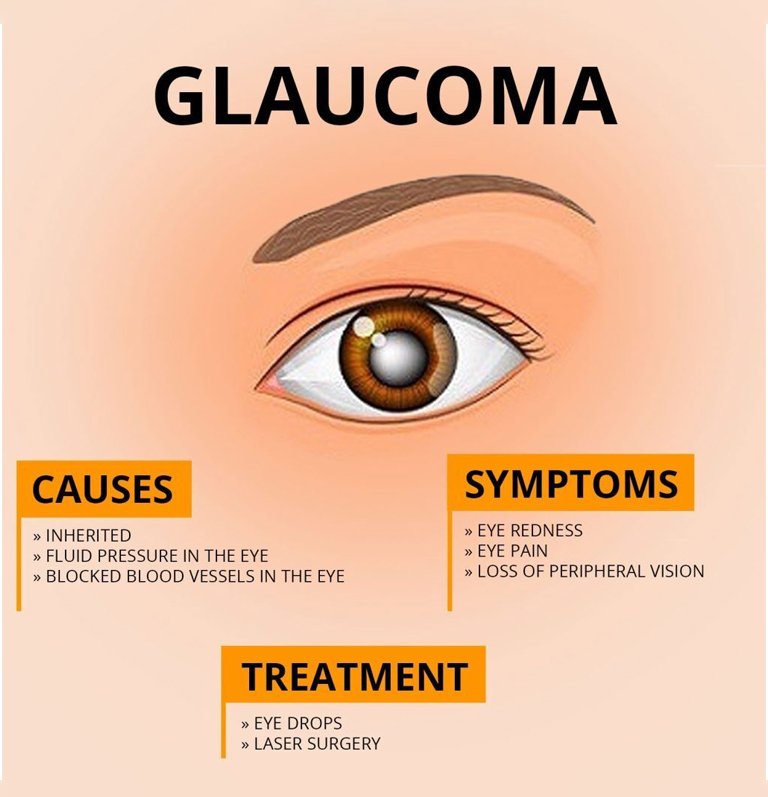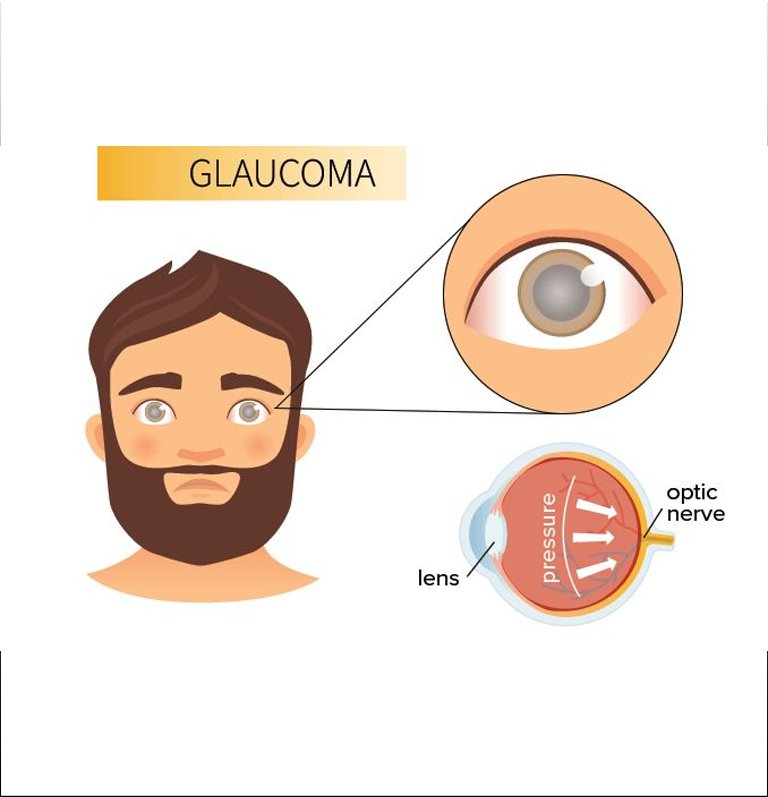


Glaucoma is a group of eye diseases characterized by damage to the optic nerve, often caused
by elevated intraocular pressure (pressure within the eye). This condition can lead to
progressive and irreversible vision loss, typically starting with peripheral vision and
eventually affecting central vision if left untreated.
Glaucoma is often referred to as the
"silent thief of sight" because it can progress slowly and without noticeable symptoms until
significant vision loss has occurred.
The main types of glaucoma include primary open-angle glaucoma, angle-closure glaucoma, normal-tension glaucoma, and secondary glaucoma. Primary open-angle glaucoma is the most common type, where the drainage angle of the eye becomes less efficient over time, leading to increased intraocular pressure.
Angle-closure glaucoma occurs when the drainage angle becomes completely blocked, causing a sudden increase in intraocular pressure and requiring immediate medical attention. Normal-tension glaucoma is characterized by optic nerve damage despite normal intraocular pressure levels. Secondary glaucoma can develop as a result of other eye conditions, such as injury, inflammation, or tumor.
Risk factors for glaucoma include age, family history, ethnicity (particularly African-American, Hispanic, or Asian descent), high intraocular pressure, thin corneas, and certain medical conditions like diabetes and hypertension. Diagnosis typically involves a comprehensive eye examination, including measurement of intraocular pressure, examination of the optic nerve, visual field testing, and sometimes imaging tests like optical coherence tomography (OCT).
Treatment for glaucoma aims to lower intraocular pressure to prevent further optic nerve damage and preserve vision. This may involve the use of eye drops, oral medications, laser therapy, or surgical procedures to improve drainage of fluid from the eye. Early detection and management are crucial in minimizing vision loss and preserving quality of life for individuals with glaucoma. Regular eye exams are essential for early detection and prompt treatment of this sight-threatening condition.

You can protect your eye health and potentially slow the process of cataracts by: Not smoking, Protecting your eyes from the sun, Getting regular eye care, and Wearing sunglasses and a hat with a brim to block ultraviolet sunlight.

Corneal disease, also known as ocular surface disease, is a group of serious conditions that can affect the cornea. These conditions can cause the cornea to become distorted, clouded, or scarred, and can even lead to blindness.

Refractive surgery is an optional eye procedure that improves the eye's refractive state and can reduce or eliminate the need for glasses or contact lenses . It can involve reshaping the cornea, implanting a lens, or replacing the lens.

The retina is the light-sensitive layer at the back of the eye that receives light and converts it into chemical energy. The uvea is the middle layer of the eye between the retina and the sclera (white part of the eye). The uvea is made up of three parts !

Emphasizes fruits, vegetables, whole grains, and fat-free or low-fat milk and milk products.

There are many variations of passages of Lorem Ipsum available, the majority have suffered alteration

There are many variations of passages of Lorem Ipsum available, the majority have suffered alteration
Refractive surgery can correct refractive errors like nearsightedness, farsightedness, astigmatism, or presbyopia. Some of these surgeries reshape the cornea. Others implant a lens in your eye. Either way, the goal is the same. These surgeries focus light correctly on the retina so you can see more clearly.


Pediatric ophthalmology is a subspecialty of ophthalmology that concentrates on treating the various eye problems affecting children. Studies show that a lot of Attention Deficit Hyperactivity Disorder (ADHD) and learning issues in children can be attributed to vision problems.

Glaucoma is a group of eye conditions that damage the optic nerve, leading to progressive vision loss. The exact cause of glaucoma is not fully understood, but several factors can contribute to its development:
Increased Intraocular Pressure (IOP): The most significant risk factor for glaucoma is elevated intraocular pressure. This pressure occurs when the fluid in the eye, called aqueous humor, doesn't drain properly, causing a buildup and subsequent pressure on the optic nerve.
Age: Glaucoma is more common in older adults, particularly those over the age of 60. As
people age,
their risk of developing glaucoma increases, although it can occur at any age.
Family History: Individuals with a family history of glaucoma are at a higher risk of developing the
condition themselves. Genetic factors may predispose certain individuals to glaucoma.
Ethnicity: Certain ethnic groups, such as African Americans and Hispanics, have a higher
prevalence
of glaucoma and are more susceptible to developing the condition at an earlier age.
Medical Conditions: Certain medical conditions, such as diabetes, hypertension, and heart
disease,
can increase the risk of developing glaucoma. Additionally, a history of eye injuries or surgeries
can also contribute to the development of glaucoma.
Corticosteroid Use: Prolonged use of corticosteroid medications, whether in the form of eye
drops,
pills, or injections, can increase the risk of developing glaucoma.
Eye Anatomy: Certain structural abnormalities of the eye, such as thinning of the cornea or
optic
nerve, can increase the risk of glaucoma.
Other Risk Factors: Other factors such as smoking, high myopia (nearsightedness), and a history of migraines may also contribute to the development of glaucoma.
While these factors can increase the risk of developing glaucoma, not everyone with these risk factors will develop the condition. Regular eye exams and early detection are crucial for managing and preventing vision loss associated with glaucoma.